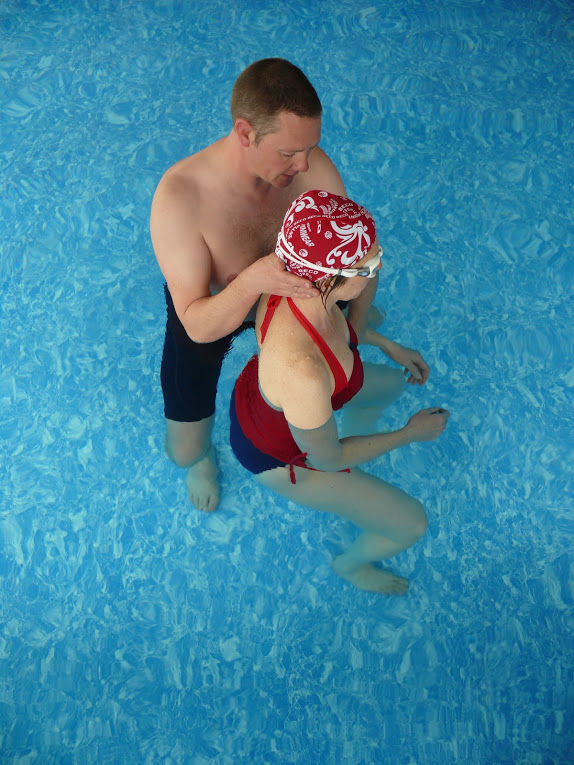Ian isn’t interested in ‘strengthening the core’.
People who don’t know very much about the Alexander Technique tend to think it’s all about posture and alignment, holding yourself better.
It’s easy to see that swimming with the Alexander Technique improves alignment in the water. But the AT is more concerned with prevention than learning to do things with right posture. It’s about becoming aware of what you’re doing (wrong) and learning to think your way out of that tendency.
The way your body looks when you do Alexander work may change but this is an incidental benefit. It’s what you’re thinking that counts, what’s going on inside. Instead of doing exercises or fixing yourself into right positions, you learn to wake up to what you’re doing in response to a stimulus, to let things quieten down and to stop doing that thing, if you can.
The big one is tightening your neck. In the water, this usually means holding on to your head, restricting your breathing and failing to let the water support you.
Because learners respond fearfully to the stimulus of water, overdoing their breathing, tensing to hold themselves up, making effort where it isn’t needed, the awareness and prevention side of the Alexander Technique is of real importance.
And because swimmers tighten up when we want to get anywhere, direction – thinking about where we want to go and sending energy to help us on our way – is important too. But this has little to do with posture or alignment. It certainly has nothing to do with ‘strengthening your core’…..
The Alexander Technique does have everything to do with our brain and nervous system, our balance, integrity in our head/ neck and back and freer breathing as an effect of this.
This is from Patrick MacDonald, The Alexander Technique As I See It:
“I think it might be useful to list the items that, taken together, I believe make the Alexander Technique one unlike any other. They are:
Recognition of the Force of Habit
Inhibition and Non-Doing
Recognition of Faulty Sensory Awareness
Sending Directions
The Primary Control*
If one meets a technique that has some similarity to the Alexander Technique, run these five simple items over it and see what is missing.”
*(natural, dynamic relationship between head and spine, which determines quality of movement and rest).


